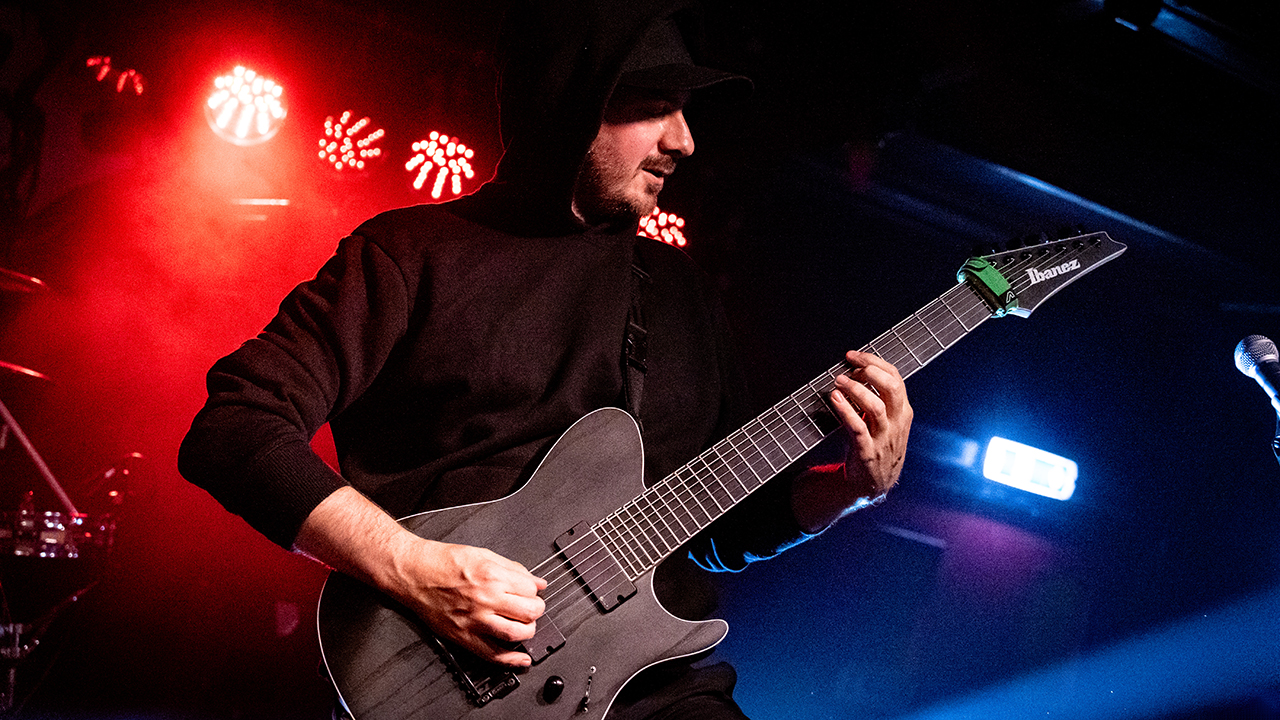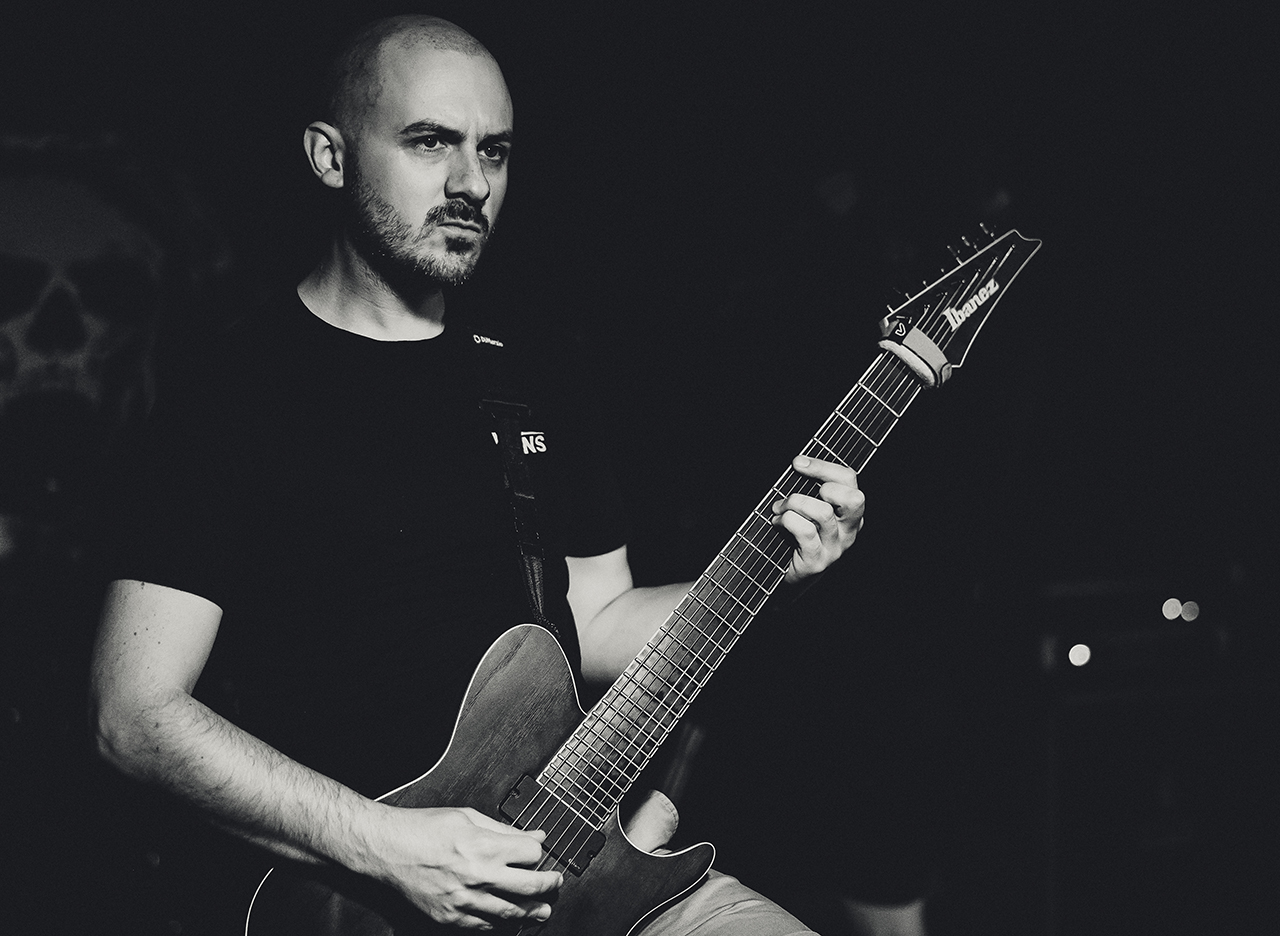“Mastodon have this tuning where the sixth string drops to B. Our singer would say, ‘No, I want it lower.’ As soon as I picked up a 7-string I wished I’d done it sooner”: Meet Obeyer, the chorus-soaked UK metallers hand-picked by Periphery
The British band hinges off rhythmic riffs, propulsive breakdowns, and lots of chorus – an effect guitarist Jamie Steadman wanted to bring back into fashion

When Periphery announced the signing of Obeyer to 3Dot Recordings, despite the band having no demos or social media presence, it seemed a remarkable leap of faith. Yet one listen to their debut album, Chemical Well, demonstrates the risk was justified.
But did they really come from nowhere? Not quite – guitarist Jamie Steadman formed Lay Siege, their previous guise, with bassist David Bartlett and drummer Lewis Niven in 2010. A debut EP dropped in 2012, followed by an album in 2015 after a change of vocalist. It was a failure.
“The album didn’t do well because it wasn’t very good,” Steadman admits. They responded by bunkering themselves in their empty-office-turned-band-room. By 2020 they had a follow-up to be proud of – but Covid forced a halt.
Meanwhile, Graphic Nature vocalist Harvey Freeman convinced them of the value of a rebrand, and with that, Lay Siege was dead. New vocalist Carl Brown helped fuel their evolution; pushing Steadman so far out of his comfort zone that he needed a new guitar to accommodate his demands.
“Carl always wants us to play lower and faster,” he says. “Mastodon have this tuning where the sixth string drops to B; I’d be writing and Carl would say, ‘No, I want it lower.’ As soon as I picked up a seven I wished I’d done it sooner.
He continues: “I’ve never been interested in shredding or melodic parts; I wanted to be a bass player. That’s why djent speaks to me. I can express myself better with rhythmic and percussive ideas.”
While the move to an extended range made sense, finding the right guitar was more difficult. “I've always loved ESP guitars and EMG pickups, – but I couldn't find something different enough to my LTD MH-401 QMNT,” Steadman says.
Get The Pick Newsletter
All the latest guitar news, interviews, lessons, reviews, deals and more, direct to your inbox!
He eventually chose an Ibanez FRIX7FEAH, tracking the album with its pair of EMG 707 humbuckers, before returning to ESP via a 27” baritone LTD M-7BHT.
“It has an EMG 81 and it is loud. I have to put my noise suppressor up to full. Any little movement of your fingers gets picked up. But when you dig in there’s a snarl that you just cannot get with other pickups.”

Because of their affiliation with Periphery, many assume the bands will have deep-lying similarities. But Steadman dismisses the prog tag for Obeyer, arguing that their emphasis is on sharp, rhythmic riffs and brutality that spars with chorus-frothed ambiance.
“I feel it's an effect that’s fallen out of favor,” he says. “Our producer, Sam Bloor, had a Boss Dimension-C. It’s a static chorus, with just three buttons instead of dials. As soon as I heard it I was like, ‘Yes, this fits so well!’ There’s loads of chorus on the album.”
We were anti-breakdown; that was one of our downfalls… we were like, ‘Why are we doing that?’
Steadman calls the modulation of his Boss Digital Reverb his signature sound, and uses a Horizon Devices Precision Overdrive for “opening everything up.” The Gramophone setting on Sonic Cake’s Wave Crush is primed for impactful drop outs, and his Digitech Ricochet lets him get gnarly: “I just hit open strings and use it for movement and horrible noises.”
As a real amp guy, Steadman was shocked to see his peers turning to modelers, protesting: “There’s something about using an amp that I don’t want to get away from.” Inspired by his first purchase, a Marshall DSL, but wanting a little more uniqueness, he’s been drawn to Blackstar and their ISF features for greater control over the peak of the mids.
I find it easier to write breakdowns alone... It’s more about finding a groove that I want to sit in. It’s not quite dancing, but you want that response from your body
“I don’t like anything too gainy. I like it to be stringy – it’s more percussive and I find it to be heavier,” he says. “There’s more of what I want to hear coming through with low gain and a lot of bottom-end woof.”
Breakdowns are Obeyer’s bread and butter, conjuring stank faces aplenty with throaty chugs and nasty, discordant chords atop a slow sea of crash cymbals. “Lay Siege was anti-breakdown; that was one of our downfalls,” Steadman reflects. “With this album, we were like, ‘Why are we doing that?’
“I find it easier to write breakdowns alone; I usually have to just sit in front of a computer and I’ll hear it before I play it. It’s more about finding a groove that I want to sit in. It’s not quite dancing, but you want that response from your body that you can’t stop.”
Many labels rejected the band for their obscurity, but Periphery seized their chance.
“We were days away from launching independently when 3Dot got in touch,” Steadman says. “On Soundcloud you can see who's listened to your music, and we were sat staring at the screen and it was saying, ‘Bulb has listened to your music… Haunted Shores has listened to your music… Spencer Sotelo…’ and all these other bands.

“We were thinking, ‘What the fuck is going on?’ We jumped on a Zoom call and the label manager’s first question was, ‘Who the fuck are you guys?’ Periphery really put us in the shop window.”
Now Steadman is repaying his heroes’ faith: “It’s been a struggle for me, mentally. The imposter syndrome was tough to deal with. I keep thinking, ‘Please don’t fuck this up, Jamie!’”
- Chemical Well is out now via 3Dot Recordings.
A freelance writer with a penchant for music that gets weird, Phil is a regular contributor to Prog, Guitar World, and Total Guitar magazines and is especially keen on shining a light on unknown artists. Outside of the journalism realm, you can find him writing angular riffs in progressive metal band, Prognosis, in which he slings an 8-string Strandberg Boden Original, churning that low string through a variety of tunings. He's also a published author and is currently penning his debut novel which chucks fantasy, mythology and humanity into a great big melting pot.
“I didn’t use any amps. The pedal that saved me was the Boss Super Overdrive”: How Yves Jarvis made 2025’s most exciting experimental record so far with a $50 Explorer knockoff and an unbelievably weird tuning
“Chess was cussin' when I got to the session with Muddy. But when he heard me, he just sat there with his mouth open”: Leonard Chess wanted to cash in on the folk boom, and asked Muddy Waters to bring him an old acoustic bluesman. He brought him Buddy Guy




![[from left] George Harrison with his Gretsch Country Gentleman, Norman Harris of Norman's Rare Guitars holds a gold-top Les Paul, John Fogerty with his legendary 1969 Rickenbacker](https://cdn.mos.cms.futurecdn.net/TuH3nuhn9etqjdn5sy4ntW.jpg)







